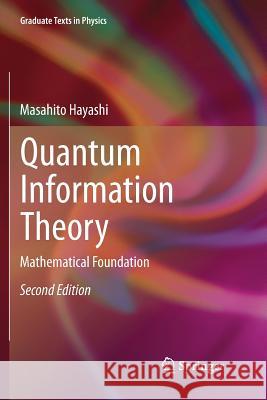Quantum Information Theory: Mathematical Foundation » książka
topmenu
Quantum Information Theory: Mathematical Foundation
ISBN-13: 9783662570326 / Angielski / Miękka / 2018 / 636 str.
Kategorie BISAC:
Wydawca:
Springer
Seria wydawnicza:
Język:
Angielski
ISBN-13:
9783662570326
Rok wydania:
2018
Wydanie:
Softcover Repri
Ilość stron:
636
Waga:
0.94 kg
Wymiary:
23.39 x 15.6 x 3.48
Oprawa:
Miękka
Wolumenów:
01
Dodatkowe informacje:
Wydanie ilustrowane











